#IoT devices
Text

Do you want to protect your family from electronic device radiation?
Click here- https://sites.google.com/view/radiation-protector/home
#radiation#family#mothers#father#loved#protective#protecting your home from these invaders. you take aim with your crossbow again#protection#negative ions#electronic#iot devices
2 notes
·
View notes
Text
Amazon Smart Plug | Works with Alexa
Imagine living in a home that listens to your commands. That fantasy becomes a reality with the “Amazon Smart Plug | Works with Alexa | control lights with voice | easy to set up and use”. This smart plug takes convenience to a whole new level by allowing you to add voice control to any outlet around your house. Whether you want your lights to switch on at a set time or need your fans to blast…
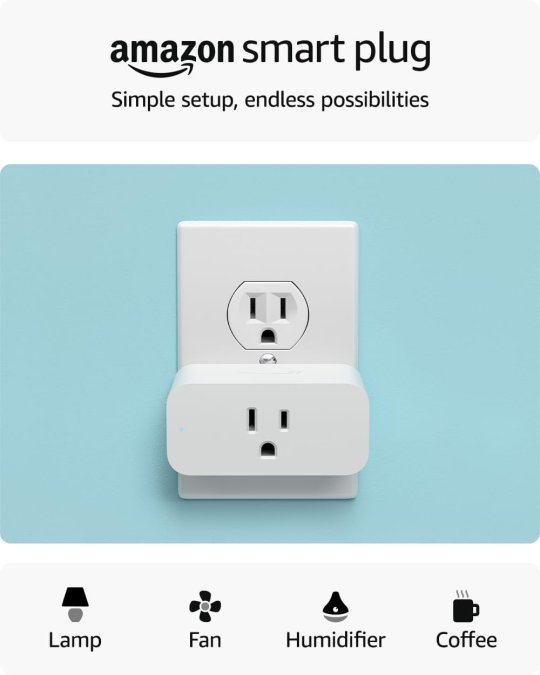
View On WordPress
0 notes
Text
youtube
NXP: MCX A Series Launch Video
https://www.futureelectronics.com/resources/featured-products/nxp-mcx-n-mcx-a-microcontrollers . MCX A Series all-purpose microcontrollers (MCUs) address a wide range of applications with scalable device options, low power and intelligent peripherals. Designed to allow engineers to do more, the new MCX A series is optimized with the essential features, innovative power architecture and software compatibility required by many embedded applications. https://youtu.be/fjNG2t4TBXQ
#nxp#MCX#MCX A#all-purpose microcontrollers#MCU#MCX A series#microchip#small-footprint MCU#software compatibility#embedded applications#industrial sensors#motor control#power system#controllers#IoT devices#Youtube
0 notes
Text
Security and Privacy Concerns in IoT Services
The Internet of Things (IoT) has woven itself into the fabric of our lives. From smart thermostats learning our temperature preferences to connected fitness trackers monitoring our daily activities, IoT devices constantly collect and transmit data. This interconnected world offers undeniable convenience, but it also introduces significant security and privacy concerns.
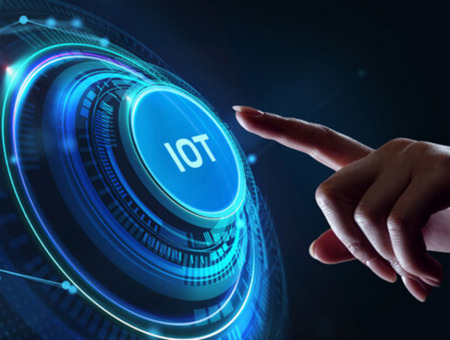
At the heart of these concerns lie the physical components of the IoT ecosystem – IoT devices. These seemingly innocuous gadgets can become gateways for malicious actors if not properly secured. Let's look more into the vulnerabilities that plague IoT services and the data they collect.
Security Concerns
Weak Encryption and Unpatched Vulnerabilities: Many IoT devices prioritize affordability and ease of use over robust security features. This often translates to weak encryption protocols and outdated software. Hackers can easily exploit these vulnerabilities to intercept sensitive data, like login credentials or home security information. Furthermore, the lack of regular security updates leaves devices exposed to known exploits, creating a constant game of catch-up for manufacturers and users alike.
Insecure Communication: The communication between IoT devices and the services they connect to might be unencrypted, resembling an open conversation anyone can listen in on. This allows attackers to eavesdrop and steal data in transit, potentially compromising user privacy or manipulating device settings to disrupt functionality.
Limited Processing Power: The compact size and low cost of IoT devices often come at the expense of processing power. This limitation restricts the implementation of complex security features like multi-factor authentication or advanced intrusion detection systems. This makes them easier targets for brute force attacks or malware that can overwhelm the device's defences.
Botnet Formation: The sheer number of IoT devices deployed globally creates a tempting target for attackers. By compromising a large number of devices, they can create powerful botnets. These botnets can then be used to launch devastating DDoS attacks, crippling critical infrastructure or online services by overwhelming them with a flood of traffic.
Privacy Concerns: Where Does the Data Go?
Data Collection Creep: IoT devices are data collection machines. From the temperature in your smart home to the number of steps you take each day, they continuously gather information. Often, the extent of this data collection is not explicitly communicated to users, leaving them unaware of the information being captured and transmitted.
Data Storage and Usage Uncertainty: Even if users are aware of data collection, the question of how it's stored and used remains. Many IoT services have opaque data privacy policies, leaving users unsure who has access to their data and for what purposes. This lack of transparency can lead to concerns about data being sold to third parties for targeted advertising or even worse, falling into the wrong hands.
Lack of User Control: In many cases, users have limited control over the data collected by their IoT devices. They might not have the option to opt-out of specific data collection practices or choose how their data is used. This lack of control undermines user privacy and can lead to feelings of helplessness for those concerned about their digital footprint.
Data Breaches: A Looming Threat: IoT services are not immune to data breaches. If a service experiences a security lapse, user data can be exposed, including sensitive information like home addresses, health data, or financial details. This can have serious consequences, ranging from identity theft and financial losses to physical harm in situations where attackers gain control of smart home devices.
Aggressive Solutions: Building a Secure and Private IoT Ecosystem
At Aggressive Solutions, we are committed to developing secure and privacy-focused IoT solutions. Here are some ways we address these challenges:
Enhanced security protocols: We implement strong encryption methods and enforce complex password policies for IoT device access. We prioritize regular security audits and penetration testing to identify and address vulnerabilities proactively.
Secure software development lifecycle (SDLC): We adhere to rigorous security practices throughout the entire development process of IoT services. This includes secure coding practices, vulnerability assessments, and secure deployment techniques.
Regular software updates: We prioritize providing regular software updates for IoT devices to patch vulnerabilities and address security risks. We actively encourage users to install these updates promptly.
User control and transparency: We give users control over their data by providing clear privacy policies and easy-to-use mechanisms to manage data collection and usage. Users should have the option to opt out of data collection or request data deletion.
Compliance with regulations: We ensure adherence to relevant data privacy regulations like GDPR and CCPA. This demonstrates our commitment to user privacy and responsible data handling.
Looking Ahead: A Collaborative Effort
The future of IoT holds immense potential for innovation and convenience. However, this potential can only be fully realized if security and privacy concerns are addressed. By working together – manufacturers prioritizing robust security features, governments enacting clear regulations, and users making informed choices – we can create a secure and thriving IoT ecosystem where users can confidently embrace the benefits of a connected world.
This approach requires a collaborative effort from all stakeholders. Manufacturers must prioritize security from the design stage onwards, governments need to establish clear guidelines and enforce them, and users require the knowledge and tools to make informed decisions about the IoT devices they bring into their lives. By prioritizing security and privacy, we can unlock the true potential of the Internet of Things and create a connected future that benefits everyone.
Published At: https://aggressivegroupco.blogspot.com/2024/04/security-and-privacy-concerns-in-iot.html
0 notes
Text
Smart Pacifiers Market will drive parenting innovation owing to growing demand for baby monitoring and soothing

The smart pacifier market has witnessed significant growth in recent years owing to technological innovations that provide parents with new ways to monitor and soothe their infants. Smart pacifiers are being integrated with sensors, trackers, and soothing functions that help parents gain insights into their baby's wellbeing and behavior from a distance. Advantages such as motion and breathing monitoring, temperature tracking, and two-way audio allow parents to check on babies remotely while ensuring their safety and comfort.
The Global Smart Pacifier Market Size is estimated to be valued at US$ 640.2 Mn in 2024 and is expected to exhibit a CAGR of 5.4% over the forecast period 2024 to 2031.
Key Takeaways
Key players operating in the smart pacifier market include Brainchild Technologies, LLC, Root3 Labs, BlueMaestro, Washington State University, NiNite , and Nouvo Health. These companies are integrating innovative technologies like sensors, wireless connectivity, and soothing audio/vibrations into traditional pacifier designs.
Explore More Related Topic: Smart Pacifiers Market
Get More Insights On This Topic: Smart Pacifiers Market
#Smart Pacifier#Baby Tech#Infant Health#Parenting Gadgets#Wearable Technology#Baby Monitoring#IoT Devices#Childcare Innovation
1 note
·
View note
Text
The Evolution of Cyber Threats: Trends and Tactics
In recent years, cyber threats have become a major concern for individuals, businesses, and even governments. The proliferation of technology and the increasing reliance on the internet have created a fertile ground for cybercriminals to exploit vulnerabilities and wreak havoc. As a result, the evolution of cyber threats has been swift and relentless, with attackers constantly adapting their…

View On WordPress
1 note
·
View note
Text
0 notes
Text
IoT Development; A Complete Guide, on Bringing Devices from Idea to Implementation
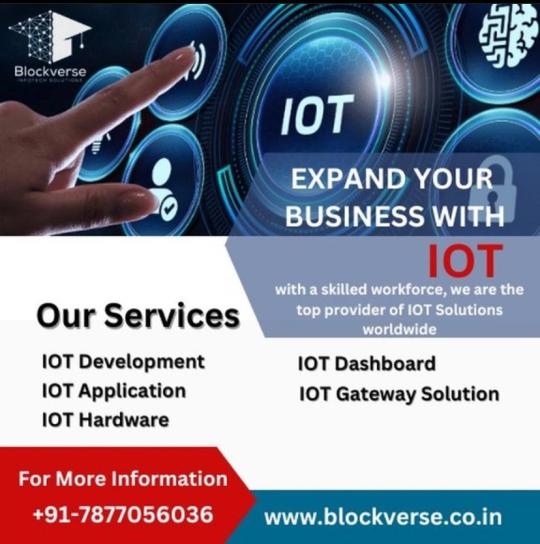
In todays paced tech world, the Internet of Things (IoT) has emerged as a game changer transforming the way we engage with our environment. At Blockverse Infotech Solutions we recognize the power of devices providing customized solutions to bring ideas to life and seamlessly integrate them into the digital realm.
The Internet of Things (IoT) has evolved from a buzzword to an aspect of contemporary technology influencing various facets of our everyday routines. From homes and wearable gadgets to automation and healthcare systems IoT enables us to connect and empower ourselves like never before. However transitioning from conceptualization to implementation of solutions can be overwhelming without guidance.
Conceptualization marks the phase, in IoT development. It entails identifying the problem or opportunity that can be addressed through technology and envisioning how interconnected devices can improve efficiency, convenience or safety. At Blockverse Infotech Solutions we work closely with clients to brainstorm ideas grasp their needs and devise IoT solutions tailored specifically for them.
Once the concept is solidified, the development phase begins. This involves designing and prototyping IoT devices, selecting appropriate sensors and connectivity protocols, and developing the software infrastructure to collect, analyze, and act upon data generated by the devices. Our team of skilled developers and engineers at Blockverse Infotech Solutions leverages cutting-edge technologies to build robust and scalable IoT solutions that meet the highest standards of performance and reliability.
Testing and validation are integral parts of the development process, ensuring that IoT devices function as intended and deliver the desired outcomes. Through rigorous testing procedures and simulation environments, we identify and rectify any issues or vulnerabilities, ensuring that the deployed IoT solutions operate seamlessly in real-world scenarios.
Deployment marks the culmination of the IoT development journey, as the solutions are implemented and integrated into existing systems or environments. From device provisioning and network configuration to data management and security protocols, our experts at Blockverse Infotech Solutions handle every aspect of the deployment process with precision and care, ensuring a smooth transition from development to operation.
Post-deployment support and maintenance are essential for ensuring the long-term success and sustainability of IoT solutions. At Blockverse Infotech Solutions, we offer comprehensive support services, including monitoring, troubleshooting, and software updates, to keep IoT devices running smoothly and efficiently.
In conclusion, navigating the complex landscape of IoT development requires expertise, innovation, and a comprehensive understanding of the technology. With Blockverse Infotech Solutions providing tailored solutions for IoT devices, businesses and organizations can embark on their IoT journey with confidence, knowing that they have a trusted partner to guide them from concept to deployment and beyond.
#internet of things#iot#iot devices#iot projects#iot applications#iot development company#iot device management software#embedded system design#iot device management app#embedded operating system#iot monitoring software#embedded systems#what is embedded system
0 notes
Text
Why Choose Elixir For Your Next Software Development Project? - Technology Org
New Post has been published on https://thedigitalinsider.com/why-choose-elixir-for-your-next-software-development-project-technology-org/
Why Choose Elixir For Your Next Software Development Project? - Technology Org
Choosing the right programming language for your project is probably one of the most difficult choices to make. Your tech stack will define your project for many years to come. An incorrectly chosen programming language can make your project slow and uncomfortable for an average user. In this post, we would like to discuss a language that, in our opinion, fits the majority of modern projects well. This language is Elixir. Read further to find out what key positive features it has and what the key reasons to use it for your next development project are.
Software development – illustrative photo. Image credit: Innovalabs via Pixabay, free license
Reason 1. Great concurrency and scalability.
The first reason to use Elixir as a programming language is undoubtedly its focus on concurrency and scalability. Firstly, Elixir is great at launching multiple processes simultaneously. This means that it can work with numerous customers doing a similarly large range of tasks. For example, if you have a web app that offers streaming and chat capabilities at the same time, Elixir is a strong option to consider. It can handle the simultaneous launching of code for both presented features. Secondly, Elixir is well-known for its low-weight processes. What does this mean? Its code doesn’t take up much space in RAM. As a result, it’s easy to scale projects that are written in Elixir. You can add multiple features before they become too extensive for the app. Consequently, Elixir is great for Software as a-service options on the market because it enables long-term development. The most successful web apps are being constantly upgraded. Elixir is one of the best languages for this model of long-term updating.
Reason 2. Ease and speed of programming
Another important reason to use Elixir is undoubtedly the ease of programming. The creators of Elixir looked at multiple different programming languages to create a high-quality syntax for their project. In this respect, Elixir took some of the best features from Python and Ruby: consequently, its structure is both familiar for experienced developers and, more importantly, easy-to-learn for newcomers. Due to its high-quality syntax, Elixir’s code has many major advantages. Firstly, it’s easy to read: even non-specialists can quickly start understanding what the developers want to do with this or that line of code. Secondly, it reduces development time by making many elements of code easy to write. Elixir’s code is clean and understandable; it also takes fewer lines than expected of other frameworks. All this contributes to the great maintainability of the language. With Elixir development services, the problem of relying too much on one development team is typically non-existent. A properly written Elixir code can be picked up by any specialist quickly and brought into production easily.
Reason 3. Fault-tolerant programming
Elixir is written over Erlang VM. Erlang is a programming language that heavily focuses on stability. Elixir, which uses its own VM, retains this core feature of Erlang. So, how does Elixir benefit from the core features of Erlang? In this regard, the presented language, above all, is very fault-tolerant. It uses the so-called actor model of concurrency, which, in many ways, prevents the majority of the problems modern programming languages encounter in terms of stability. The Erlang VM splits all tasks into separate groups and creates a clear hierarchy for them. It isolates processes so that the failure of one process doesn’t lead to the failure of an entire program. In this light, the projects made with Elixir become highly stable. Even if several components of them fail due to some reason, the entire app or website won’t collapse. Moreover, Elixir and Erlang VM will immediately launch processes aimed at restoring your app. In this way, you get an opportunity to create apps that work in high-stress environments with unpredictable loads.
Reason 4. Great access to libraries
Elixir is well-known for its great access to various libraries. Firstly, it has a small but dedicated community of developers who create platform-specific extensions. There are now more and more tools for adapting this language to the demands of Internet development. Secondly, and more importantly, Elixir provides you with access to the tremendous number of libraries connected to Erlang. Over the preceding years, Erlang has been battle-tested in the telecom sector. This means it has many relevant libraries. For many years, those unique extensions were available only to Erlang developers, who mostly worked in telecom. The core revolution of Elixir is that it provides access to such innovations to a wide audience. This genuinely unique library choice is perfect when your core goal is to create a project that will have to withstand significant outside pressure and maintain stability at the same time.
Core sectors in which Elixir works great
In our opinion, Elixir is notable for its great flexibility. In many ways, it’s suitable for the majority of development tasks outside high-CPU-load apps. It’s especially potent in three sectors: web development, IoT creation, and telecommunications. Firstly, we recommend Elixir for a wide range of web apps. In one way or another, Elixir is one of the best languages when you need to create an app that can withstand large amounts of outside pressure. Secondly, Elixir is a strong option to consider for the Internet of Things. IoT devices often perform vital functions for their users. As a result, any issues with their long-term functioning can be debilitating. If the software of a smart fridge fails, the user may easily lose high-value food. Elixir solves this problem by being highly fault-tolerant: situations where entire apps collapse in this framework are almost non-existent. Consequently, it’s possible for the Elixir app to be stable for months and even years of uptime. Lastly, Elixir is great for various communication projects. In this regard, it greatly benefits from Erlang features.
Conclusion
All in all, you should definitely try using Elixir for your future projects. Why? The reason is simple: it’s among the best programming languages on the market. How should you search for experts in this field? Seek companies that develop using Elixir and have multiple years of experience with creating online projects. In this respect, we can recommend Keenethics. This company has several years of experience developing web and mobile projects, using a diverse tech stack, which also includes Elixir.
#app#apps#code#communication#Community#Companies#Concurrency#cpu#creators#developers#development#development project#devices#easy#Experienced#extensions#Features#Food#framework#Future#how#innovations#Internet#Internet of Things#IoT#IoT devices#issues#it#language#Languages
0 notes
Text
#Smart home technology#Connected living#Home automation#IoT devices#Energy-efficient homes#Home security systems#Convenience of device integration#Future of living#Home maintenance automation#Voice-controlled assistants
0 notes
Text
Sensor Data for Internet of things (IOT)
In today's ever-evolving digital landscape, the Internet of Things (IoT) has emerged as a transformative force, reshaping how we interact with our environments.
The seamless integration of sensor data, which enables a multitude of applications across varied industries, is central to this technological transformation. From smart homes and cities to industrial automation and healthcare, the possibilities are endless when it comes to leveraging sensor data for IoT solutions.
I am Techy Saad and welcome to Techy Saad blogs. Let's understand the sensor data for IOT.
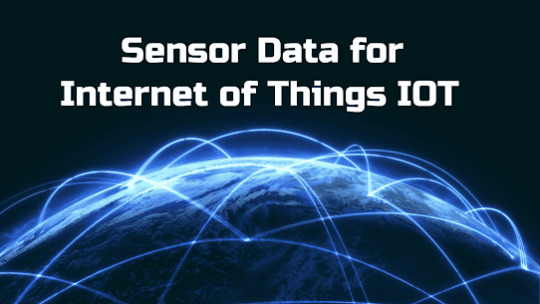
Understanding Sensor Data
Sensor data, the lifeblood of interconnected systems, is information gathered from sensors placed in the real world. These sensors detect and measure changes in their surroundings; they can measure temperature, humidity, chemicals, pressure, proximity, solar radiation, fluid levels, and optical properties. The information gathered from these sensors offers priceless insights into real-world phenomena, facilitating well-informed decision-making and improving efficiency across a range of domains.
The Role of Sensor Data in IoT
Sensor data is essential to IoT because it enables intelligent decision-making and automation. IoT devices can monitor, analyze, and react to changes in their environment in real time by gathering data from various sources. For example, a smart home with proximity, humidity, and temperature sensors can adjust its heating and cooling settings based on occupancy and environmental conditions, maximizing energy efficiency and improving comfort.
In industrial environments, sensors are essential for tracking equipment performance and guaranteeing optimal operation. For example, pressure sensors can identify changes in fluid pressure in pipelines, allowing for predictive maintenance to avert expensive malfunctions, and level sensors can track fluid levels in tanks to enable prompt replenishment and minimize downtime.
There are many kinds of Internet of things sensors. Here are few and most common used IOT sensors:
Temperature Sensors
In the same way that a single inaccurate temperature reading in a factory may spoil a whole batch of food, temperature controls in factories frequently determine what will happen to a product. Temperature sensors serve this purpose by providing us with relevant information about the temperature.
Pressure Sensor
One typical usage for a pressure sensor is to detect changes in the pressure of a gas or liquid and convey that information to any other devices that are linked to it. One common use for a pressure sensor is to test for leaks, which could be caused by wear and tear.
Level Sensor
Level sensors are used in many different sectors, such as oil, cleaning water, food and drink, and waste management systems because they can detect when a trash can or dumpster is full. They can also measure the height of liquids, powders, granules, and other materials.
Sensor for Humidity
Humidity sensors are widely used in HVAC (heating, ventilation, and air conditioning) systems in homes and businesses; they are used in weather stations to forecast the weather and in hospitals to monitor patient care. Water vapors sensors measure the amount of humidity in a sample of air or a mixture of gases.
Sensors for Chemical
In addition to providing real-time data for detecting chemical leaks in drums or tanks, chemical sensors can benefit any business that uses process lines. These Internet of Things sensors can also guarantee that hazardous materials are handled securely and safely whenever they are used on-site, which would make the factory a safer and more productive place to work.
Key Considerations for Sensor Data in IoT Deployments
Effectively harnessing sensor data in IoT deployments requires careful consideration of several factors:
Data Quality
Ensuring the accuracy and reliability of sensor data is paramount. Regular calibration and maintenance of sensors are essential to maintain data integrity and fidelity.
Data Security
Protecting sensor data against cybersecurity threats is critical. Implementing robust encryption, access controls, and data governance practices safeguards sensitive information from unauthorized access and manipulation.
Scalability
Leveraging scalable data storage and processing options, such as cloud platforms and edge computing...
Read Full Article by clicking below:
Read Full
#sensor#iot#iot devices#Techy Saad#writers on tumblr#programmer#tech world#inventions#future#creative writing#inovation#tech#technology#blog#blogger#blogging
1 note
·
View note
Text
IoT smart lighting system -how does it work?
In a time where innovation consistently coordinates into our day to day routines, the appearance of savvy IoT Drove lighting frameworks has altered the manner in which we see and use lighting. Yet, how precisely do these frameworks work? At its center, an IoT lighting framework alludes to an organization of interconnected lighting gadgets that can be somewhat controlled and mechanized through the web. This creative way to deal with lighting offers unmatched control and productivity, making it a critical component in current structures and public spaces.
What is IoT lighting?
IoT lighting includes the mix of lighting installations with sensors, programming, and organization availability, considering insightful and responsive lighting the executives. These frameworks accumulate information about their current circumstance and client inclinations, empowering them to make ongoing changes for ideal lighting conditions.
When did IoT started to utilized in light
The idea of IoT in lighting started building up momentum with the advancement of Driven innovation and the rising interest for energy-effective arrangements. This union of eco-cordiality and trend setting innovation denoted another section in lighting arrangements, accentuating enlightenment as well as clever control and maintainability. IoT innovation with lighting essentially started to get forward momentum in the last part of the 2000s and mid 2010s, likewise determined by the fast headway and reception of Driven (Light Transmitting Diode) innovation. The Drove innovation's energy-saving properties, joined with its capacity to effectively communicate with sensors and arranged control frameworks, made it an optimal possibility for IoT applications in lighting. Subsequently, the mid 2010s saw an expanded spotlight on creating brilliant lighting arrangements that were tied in with giving brightening as well as about offering upgraded control, diminished energy utilization, and more prominent supportability.
The innovation behind brilliant IoT lighting frameworks
At the core of brilliant lighting lies a blend of cutting edge innovations. Key parts incorporate Drove bulbs, which are known for their energy productivity and life span, sensors that recognize natural changes, and remote correspondence conventions like Zigbee, Bluetooth, and Wi-Fi. These components work couple to give a responsive and versatile lighting environment.
Top 5 advantages of utilizing IoT light control
Energy productivity: Computerized controls and advanced use essentially diminish energy utilization.
Cost investment funds: Lower energy use means decreased functional expenses.
Upgraded solace and efficiency: Versatile lighting further develops feel and supports human circadian rhythms.
Remote observing and control: IoT-empowered lighting frameworks can be overseen from anyplace, giving adaptability and convenience.
Information examination: Assortment of utilization information helps in pursuing informed choices for future upgrades.
The collaboration among IoT and Drove
LEDs are not simply energy-effective; they are additionally helpful for advanced control. This similarity with advanced frameworks settles on LEDs the ideal decision for IoT applications in lighting, empowering highlights like variety temperature changes and darkening abilities, which are fundamental for establishing dynamic and responsive conditions.
To know more: https://iotled.net/iot-smart-lighting-system/
0 notes
Text

Explore the possibilities of IoT with Ennoble Technologies expert Internet of Things (IoT) services. Transform your business with innovative solutions.
Do Visit: https://ennobletechnologies.com/internet-of-things/
#Internet of Things#IoT Technology#IoT Solutions#Connected Devices#IoT Integration#Smart Technology#IoT Applications#IoT Devices#IoT Trends#IoT Innovations#IoT Connectivity#Smart Home Systems#Industrial IoT#IoT Development#IoT in Business
1 note
·
View note
Text
youtube
TAIYO YUDEN USA MCOIL Power Inductor LSDP Series
https://www.futureelectronics.com/resources/featured-products/taiyo-yuden-lsdp-series-wire-wound-metal-power-inductors . Introducing TAIYO YUDEN's MCOIL power inductor, LSDP series, for consumer electronics, IoT devices and more. https://youtu.be/htt8rRSh7Zo
#TAIYO YUDEN#MCOIL Power Inductor LSDP#TAIYO YUDEN MCOIL power inductor#LSDP series#consumer electronics#IoT devices#Youtube
0 notes
Text
BLIIoT Water Meter Pulse Counting Gateway S271

Background
No matter where you live, water and electric meters are an absolute must. Water meters record how much water you use and how much you pay for it. Water meters help monitor data, conserve water, and lower water bills.
Pulse Counting Gateway
Pulse Counting Gateway S271 is designed to count the number of pulses from electricity meters, water meters or general meters as well as machinery and equipment with pulse outputs. Quickly and cost-effectively transform your traditional water meter into a smart water meter, monitoring data in real time.
Solution
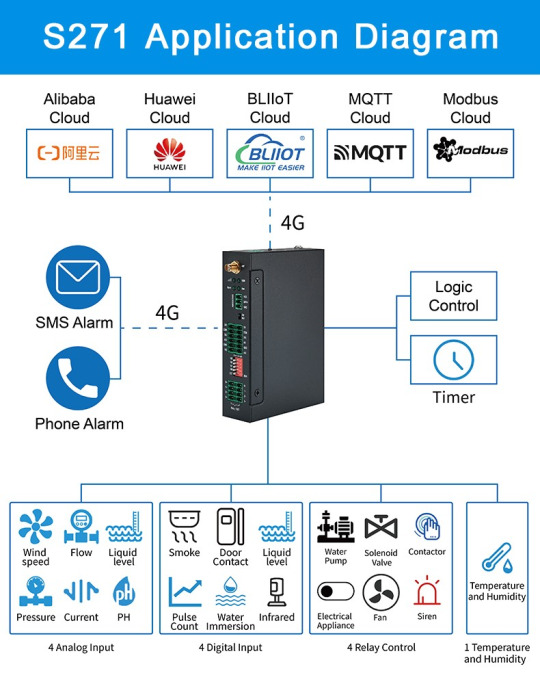
Pulse Counting Gateway S271 can be used in different applications such as agricultural irrigation, smart building meter reading and industrial water use. The device can be connected to a pulse water meter, and then collect water use data and upload the data to the IoT cloud platform via 4G for further visualization. Users can check the status of the water meter and perform monitoring and control at any time. The pulse counter can provide remote monitoring and visual intelligent data management to achieve water conservation.
More information about Water Meter Pulse Counting Gateway S271: https://www.bliiot.com/m2m-rtu-p00175p1.html
0 notes